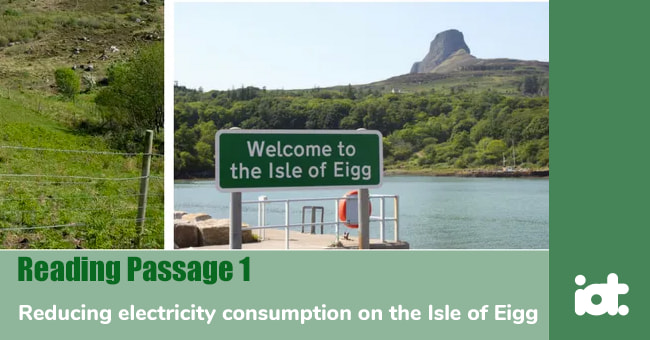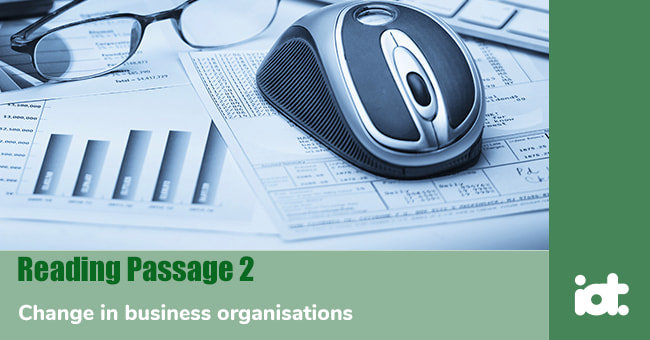
IELTS Practice Tests Plus Volume 3
- Published on: 14 Dec 2017
- Tests taken: 548,540
Answer Keys:
Part 1: Question 1 - 13
- 1 100/a hundred
- 2 50%/50 percent
- 3 (mainly) water
- 4 energy monitors
- 5 diesel generators
- 6 insulation
- 7 greenhouses
- 8 FALSE
- 9 TRUE
- 10 NOT GIVEN
- 11 TRUE
- 12 FALSE
- 13 TRUE
Part 2: Question 14 - 26
- 14 F
- 15 B
- 16 G
- 17 A
- 18 C
- 19 C
- 20 B
- 21 A
- 22 C
- 23 B
- 24 temporary
- 25 home
- 26 factors
Part 3: Question 27 - 40
- 27 A
- 28 C
- 29 A
- 30 D
- 31 B
- 32 NOT GIVEN
- 33 YES
- 34 YES
- 35 NO
- 36 NOT GIVEN
- 37 F
- 38 E
- 39 H
- 40 A
Leaderboard:
| # | User | Score | Time | |
|---|---|---|---|---|
| Nguyen Huy Kien |  | 9.0 | 15:10 | |
| Hyder Abbas |  | 9.0 | 15:26 | |
| RIDDHI UPADHYAY |  | 9.0 | 15:26 | |
| 4 | Anjali Devi |  | 9.0 | 15:28 |
| 5 | Do Khanh |  | 9.0 | 16:14 |
| 6 | Ronke Patrick |  | 9.0 | 16:26 |
| 7 | Madiha Khan |  | 9.0 | 16:34 |
| 8 | Adriana Velasquez |  | 9.0 | 16:40 |
| 9 | Harmeet Singh |  | 9.0 | 17:03 |
| 10 | Le Quoc Anh |  | 9.0 | 17:39 |
Tips for improving your ielts score
Review & Explanations:
Questions 1-7
Answer the questions below.
Choose NO MORE THAN TWO WORDS AND/OR A NUMBER from the passage for each answer.
Approximately how many people live on Eigg?
1
What proportion of a UK household’s electricity consumption does an Eigg household consume?
2
Apart from wind and sun, where does most of Eigg’s electricity come from?
3
What device measures the amount of electricity Eigg’s households are using?
4
When renewable energy supplies are insufficient, what backs them up?
5
What has EHT provided free of charge in all the houses it owns?
6
Which gardening aid did some Eigg inhabitants claim grants for?
7
- 1 Answer: 100/a hundred
Keywords in Questions
Similar words in Passage
Q1. Approximately how many people live on Eigg?
For the island community of about a hundred residents
After reading paragraph 1, we can easily see that the correct answer for Q1 should be “a hundred”
“People” and “residents” are interchangeable in this context.
Thus, the correct answer for Q1 should be “a hundred”
- 2 Answer: 50%/50 percent
Keywords in Questions
Similar words in Passage
Q2. What proportion of a UK household’s electricity consumption does an Eigg household consume?
Today, although the island now has most modem conveniences, CO2 emissions per household are 20 percent lower than the UK average, and electricity use is 50 percent lower.
From paragraph 1, “electricity use is 50 percent lower” means that “Eigg household consumes electricity is 50 percent lower than the UK average”
Thus, the correct answer for Q2 should be “50 percent”
- 3 Answer: (mainly) water
Keywords in Questions
Similar words in Passage
Q3. Apart from wind and sun, where does most of Eigg’s electricity come from?
This would also allow the island to generate most of its electricity from renewable sources, mainly water , wind and solar power
After reading paragraph 1, we can see that:
“Most” and “mainly” have the same meaning in this case.
From paragraph 1, “water, wind and solar power” are mentioned as sources to generate electricity in Island Eigg.
“Wind and sun” and “wind and solar power” are interchangeable in this context.
Thus, the correct answer for Q3 should be “water”
- 4 Answer: energy monitors
Keywords in Questions
Similar words in Passage
Q4.What device measures the amount of electricity Eigg’s households are using?
All households and businesses have energy monitors, which display current and cumulative electricity usage
After reading paragraph 2, we can see that:
“Measure the amount of electricity Eigg’s household are using” and “display current and cumulative electricity usage” refer to the same meaning in this case.
From paragraph 2, the device to measure electricity usage is energy monitors
Thus, the correct answer for Q4 should be “energy monitors”
- 5 Answer: diesel generators
Keywords in Questions
Similar words in Passage
Q5. When renewable energy supplies are insufficient, what backs them up?
…when renewable energy generation is lower than demand , and diesel generators are operating to back it up - a so-called ‘red light day’, as opposed to ‘green light days’ when there is sufficient renewable energy.
After reading paragraph 2, we can see that:
“Insufficient” and “lower than demand” have the same meaning in this case.
The device can back renewable energy supplies( renewable energy generation) up is diesel generators
Thus, the correct answer for Q5 should be “diesel generators”
- 6 Answer: insulation
Keywords in Questions
Similar words in Passage
Q6. What has EHTprovided free of charge in all the houses it owns?
Eigg Heritage Trust has installed insulation in all of its own properties at no cost to the tenants
After reading paragraph 2, all the keywords are mentioned, we can easily see that the correct answer for Q5 should be “insulation”
“Provided” and “installed” have the same meaning in this case.
“Free of charge” and “no cost” are interchangeable in this context.
Thus, the correct answer for Q6 should be “insulation”
- 7 Answer: greenhouses
Keywords in Questions
Similar words in Passage
Q7. Which gardening aid did some Eigg inhabitants claim grants for?
The Trust also operates a Green Grants scheme, where residents can claim 50 percent of the cost of equipment to reduce carbon emissions, up to a limit of £300. Purchases included bikes, solar water heating, secondary glazing, thicker curtains, and greenhouses to grow food locally, rather than importing it.
After reading paragraph 2, we can see that:
“Bikes, solar water heating, secondary glazing, thicker curtains, and greenhouses” are mentioned as equipments that inhabitants claim grants for. From the question, “gardening aid” refers to “greenhouses”.
Thus, the correct answer for Q7 should be “greenhouses”
Questions 8-13
Do the following statements agree with the information given in Reading Passage 1? Write
| TRUE | if the statement agrees with the information |
| FALSE | if the statement contradicts the information |
| NOT GIVEN | If there is no information on this |
8 Electricity was available for the first time on Eigg when a new grid was switched on.
9 Eigg’s carbon emissions are now much lower than before.
10 Wood will soon be the main source of heating on Eigg.
11 Eigg is quieter as a result of having a new electricity supply.
12 Well-off households pay higher prices for the use of extra electricity.
13 The new electricity grid has created additional employment opportunities on Eigg.
- 8 Answer: FALSE
Keywords in Questions
Similar words in Passage
Q8. Electricity was available for the first time on Eigg when a new grid was switched on.
Prior to the installation of the new electricity grid and renewable energy generation, most households on Eigg used diesel generators to supply electricity.
After reading paragraph 3, we can see that:
"Prior to the installation" means "before the installation".
- The question means that “there was no electricity on Eigg before a grid was switched on”, but the passage says that “people living on Eigg used diesel generators to supply electricity before the installation of the new grid”.
The information in Q8 and paragraph 3 is opposite to each other. Thus, the correct answer for Q8 should be “FALSE”
- 9 Answer: TRUE
Keywords in Questions
Similar words in Passage
Q9. Eigg’s carbon emissions are now much lower than before
The work by the Eigg Heritage Trust to reduce energy use has resulted in significant reductions in carbon emissions from the island’s households and businesses.
After reading paragraph 3, we can see that:
“The work by the Eigg Heritage Trust to reduce energy use has resulted in significant reductions in carbon emissions”, means that “carbon emissions reduced significantly, were much lower than before”
Thus, the correct answer for Q9 should be “TRUE”
- 10 Answer: NOT GIVEN
Keywords in Questions
Similar words in Passage
Q10. Wood will soon be the main source of heating on Eigg
Although passage 1 mentioned that “The emissions should fall even further over the next few years as the supply of wood for heating increases”, but it did not mention “Wood will soon be the main source of heating on Eigg” or not.
Thus, the correct answer for Q10 should be “NOT GIVEN”
- 11 Answer: TRUE
Keywords in Questions
Similar words in Passage
Q11. Eigg is quieter as a result of having a new electricity supply
A reliable electricity supply has brought improvements in other areas, for example, better treatment of drinking water in some houses, and the elimination of the constant noise of diesel generators.
After reading paragraph 4, we can see that:
“The elimination of the constant noise of diesel generators” means that “The island (Eigg) is quieter.
“Elimination of noise” and “quiet” have the same meaning in this case.
Thus, the correct answer for Q11 should be “TRUE”
- 12 Answer: FALSE
Keywords in Questions
Similar words in Passage
Q12. Well-off households pay higher prices for the use of extra electricity
Every household has the same five kW cap, irrespective of income, so distributing the available resources equally across the island’s population
After reading paragraph 4, we can see that electricity usage is the same for island’s population, irrespective of income, contradicted with “well-off households pay higher prices…”
Thus, the correct answer for Q12 should be “FALSE”
- 13 Answer: TRUE
Keywords in Questions
Similar words in Passage
Q13. The new electricity grid has created additional employment opportunities on Eigg.
Eigg’s electricity grid supports four part-time maintenance jobs on the island
residents have also been employed for building work to improve Trust-owned houses and other buildings
A part-time ‘green project manager’ post has also been created.
…which has enabled several new businesses to start up
After reading paragraph 5, we can easily see that “new electricity has created many jobs and opportunities on the island”
Thus, the correct answer for Q13 should be “TRUE”
READING PASSAGE 1
You should spend about 20 minutes on Questions 1-13. which are based on Reading Passage 1 below.

Reducing electricity consumption on the Isle of Eigg
Background
The Isle of Eigg is situated off the West Coast of Scotland, and is reached by ferry from the mainland. For the island community of about a hundred residents, it has always been expensive to import products, materials and skilled labour from the mainland, and this has encouraged a culture of self-sufficiency and careful use of resources. Today, although the island now has most modern conveniences, CO2 emissions per household are 20 percent lower than the UK average, and electricity use is 50 percent lower.
When Eigg designed its electricity grid, which was switched on in February 2008, it quickly became apparent that in order to keep the capital building costs down, it would be necessary to manage demand. This would also allow the island to generate most of its electricity from renewable sources, mainly water, wind and solar power. This goal was overseen by the Eigg Heritage Trust (EHT).
The technology
Eigg manages electricity demand mainly by capping the instantaneous power that can be used to five kilowatts (kW) for a household and ten kW for a business. If usage goes over the limit, the electricity supply is cut off and the maintenance team must be called to come and switch it back on again. All households and businesses have energy monitors, which display current and cumulative electricity usage, and sound an alarm when consumption reaches a user-defined level, usually set a few hundred watts below the actual limit. The result is that Eigg residents have a keen sense of how much power different electrical appliances use, and are careful to minimise energy consumption.
Demand is also managed by warning the entire island when renewable energy generation is lower than demand, and diesel generators are operating to back it up - a so-called ‘red light day’, as opposed to ‘green light days’ when there is sufficient renewable energy. Residents then take steps to temporarily reduce electricity demand further still, or postpone demand until renewable energy generation has increased.
Energy use on the island has also been reduced through improved wall and loft insulation in homes, new boilers, solar water heating, carsharing and various small, energy-saving measures in households. New energy supplies are being developed, including sustainably harvested forests to supply wood for heating.
Eigg Heritage Trust has installed insulation in all of its own properties at no cost to the tenants, while private properties have paid for their own insulation to be installed. The same applies for installations of solar water heating, although not all Trust properties have received this as yet. The Trust also operates a Green Grants scheme, where residents can claim 50 percent of the cost of equipment to reduce carbon emissions, up to a limit of £300. Purchases included bikes, solar water heating, secondary glazing, thicker curtains, and greenhouses to grow food locally, rather than importing it.
Environmental benefits
Prior to the installation of the new electricity grid and renewable energy generation, most households on Eigg used-diesel generators to supply electricity, resulting in significant carbon emissions. Homes were also poorly insulated and had old, inefficient oil-burning boilers, or used coal for heating.
The work by the Eigg Heritage Trust to reduce energy use has resulted in significant reductions in carbon emissions from the island’s households and businesses. The average annual electricity use per household is just 2,160 kilowatt hours (kWh), compared to a UK average in 2008 of 4,198 kWh. Domestic carbon emissions have fallen by 47 percent, from 8.4 to 4.45 tonnes per year. This compares to average UK household emissions of 5.5 to 6 tonnes per year. The emissions should fall even further over the next few years as the supply of wood for heating increases.
Social benefits
The completion of Eigg’s electricity grid has made a significant difference to the island’s residents, freeing them from dependence on diesel generators and providing them with a stable and affordable power supply. A reliable electricity supply has brought improvements in other areas, for example, better treatment of drinking water in some houses, and the elimination of the constant noise of diesel generators. Improved home insulation and heating has also yielded benefits, making it more affordable to keep homes at a comfortable temperature. One of the incentives for capping electricity use, rather than charging different amounts according to usage, was to make access to energy equitable. Every household has the same five kW cap, irrespective of income, so distributing the available resources equally across the island’s population.
Economic and employment benefits
Eigg’s electricity grid supports four part-time maintenance jobs on the island, and residents have also been employed for building work to improve Trust-owned houses and other buildings. Likewise, the start of organised harvesting of wood for heating has created several forestry jobs for residents. A part-time ‘green project manager’ post has also been created. A wider economic impact has come from having a reliable and affordable electricity supply, which has enabled several new businesses to start up, including restaurants, shops, guest houses and self-catering accommodation. As Eigg has become known for cutting carbon emissions and protecting the environment, an increasing number of visitors have come to the island to learn about its work, bringing a further economic benefit to the residents.







Comments: